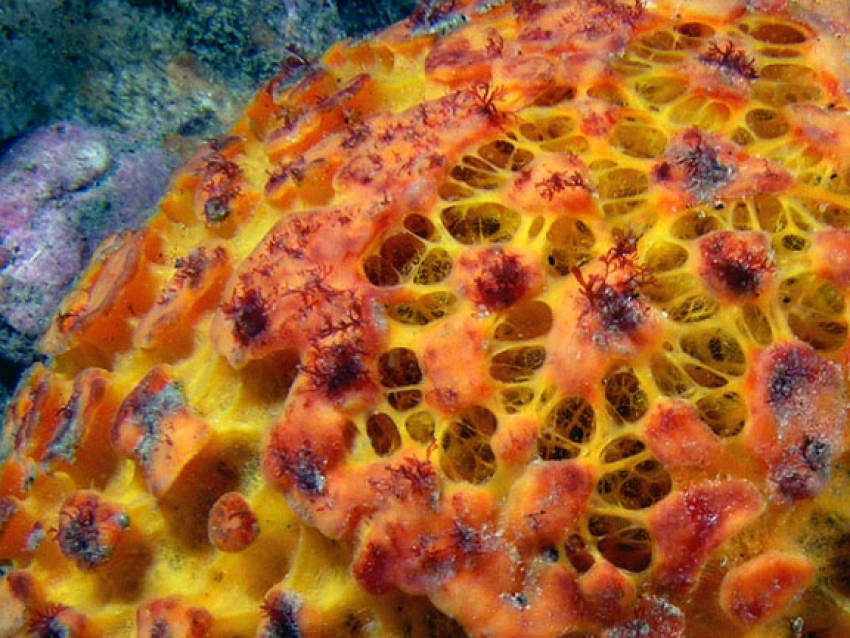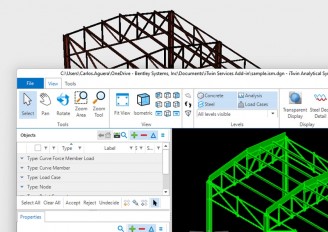Sea sponges provide insight into how buildings can resist buckling

Brown University engineers Haneesh Kesari and Michael Monn have been studying sea sponges in order to understand how these fairly simple creatures can maintain their shape at the bottom of the ocean, despite the fact that they are subject to the constant stress of underwater waves and tidal forces. The findings of their research, published in the journal Scientific Reports showed that tiny structural rods in the sponges’ bodies have evolved the optimal shape to avoid buckling under pressure. According to the researchers, this shape could provide a blueprint for increasing the buckling resistance in all kinds of slender human-made structures, from building columns to bicycle spokes to arterial stents, as buckling is the primary mode of failure for slender structures.
The researchers focused on orange puffball sponges (Tethya aurantia), a species that is native to the Mediterranean Sea. The sponge’s body is formed by hundreds of rods (spicules) bundled together, while each of them has an odd and remarkably consistent shape, going gradually from fatter in the middle to thinner at the ends. "We saw the shape and wondered if there might be an engineering principle at work here", said Kesari, Assistant Professor of Engineering at Brown. Using structural mechanics models to understand what forces are acting on each individual spicule, they found that the mismatch in stiffness between the bulk of the sponge's soft body and the more rigid spicules causes each spicule to experience primarily one type of mechanical loading -- a compression load on each of its ends. The primary mode of failure for a structure with this mechanical load is through buckling as at a certain critical load, the structure starts to bend somewhere along its length. So, the researchers wanted to see if there was anything special about them that helped them resist buckling. Scanning electron microscope images of the inside of a spicule and other tests showed that they were monolithic silica -- essentially glass. "We could see that there was no funny business going on with the material properties," Monn said. "If there was anything contributing to its mechanical performance, it would have to be the shape."
Optimal shape
Even since 1851, the German scientist Thomas Clausen had proposed that columns that are tapered toward their ends should have more buckling resistance than plain cylinders, which are still the primary design for architectural columns. His theory was also confirmed in the 1960s by the mathematician Joseph Keller, who calculated that the Clausen column is 33% more resistant than a cylinder. Even compared to an ellipse, which is slightly fatter in the middle and pointier at the ends, the Clausen column had 18% better buckling resistance. After making precise dimensional measurements of dozens of spicules, Monn and Kesari showed that their shapes were remarkably consistent and nearly identical to that of the Clausen column. "The spicules were a match for the best shape of all possible column shapes," Monn said.
However, the Clausen profile isn't widely known in the engineering community and the two researchers hope their work will be an ‘addition to our library of structural designs. We're not just talking about an improvement of a few percent. This shape is 33% better than the cylinder, which is quite an improvement’. This theory would be very useful in the new generation of materials made from nanoscale truss structures, into which it would be easy to 3D print the Clausen profile with a significant increase in buckling resistance. "This work shows that nature can hit an optimum," Kesari said, "and the biological world can still be hiding completely new designs of considerable technological significance in plain sight."
Source: Brown University
Want to read more like this story?
Buckling
Sep, 16, 2022 | EducationThe sudden change in shape of a structural component under a specific loading condition is called...

Mathematical model for moment-less arch
Jun, 25, 2019 | NewsResearchers from the University of Warwick, inspired by nature's shapes, have introduced a new gener...

Calculation Example – Buckling of Column (EC3).
Aug, 17, 2016 | EducationCheck the column for buckling according to EC3. HEB300/S275 and axial force NEd=1000KN. The column (...

Calculation Example – Buckling of Column (EC3).
Oct, 04, 2017 | EducationCheck the column for buckling according to EC3. HEB300/S275 and axial force NEd=1500KN. The column (...
Columns
Sep, 14, 2023 | EducationColumn, in structural engineering, is a vertical structural element that primarily supports compres...
Behavior of Columns During Earthquakes
Jan, 01, 2019 | EducationThe behavior of columns in earthquakes is very important since column failures may lead to additiona...

Types of reinforced concrete structures collapse
May, 20, 2019 | NewsMany types of failure can trigger the collapse of a reinforced concrete building. Any structure m...

StabLab 2013
Nov, 01, 2013 | Software
Bentley Coffee Corner: STAAD - Creating Custom Steel Sections with the Shape Editor
Sep, 12, 2024 | EventStructural Engineers must consider accurate section properties in the analysis and design of steel...
Trending

Spectacular interchanges around the world

New Release - STAAD.Pro 2024 - 2

ADINA 2025 for Structural WorkSuite

ADINA 2025 New Release!

Concrete Buildings as Rechargeable Batteries

Powerful earthquake shakes central Philippines, dozens killed


